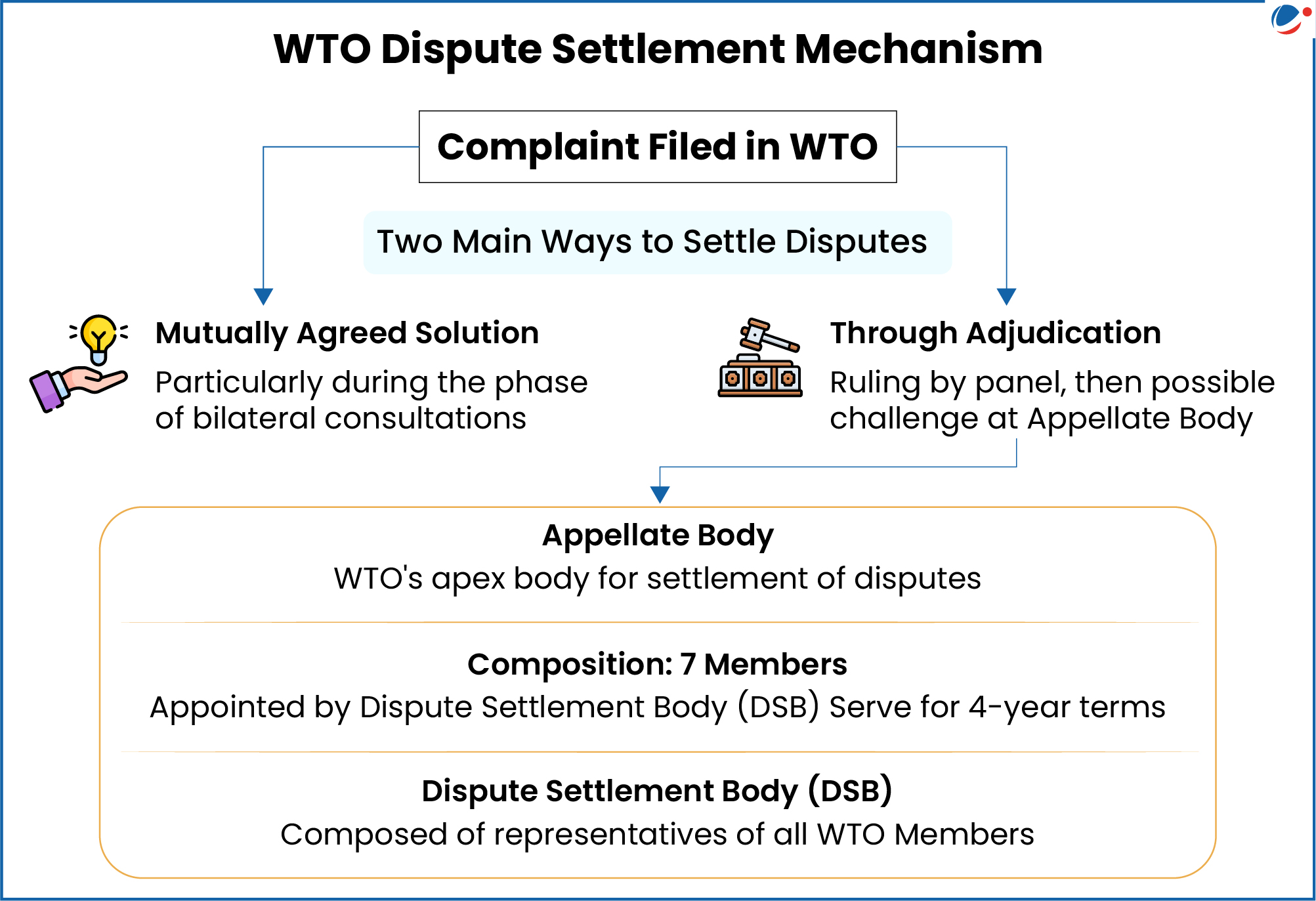A Suggestion was made for a Europe-led trade initiative with Asian countries to create a new trade cooperation framework, as the WTO remains stalled.

What is the WTO?
- Genesis: Established in 1995, replacing the erstwhile GATT (General Agreement on Tariffs and Trade) of 1947.
- GATT was only a provisional arrangement, not a whole organisation.
- Mandated: To regulate different aspects of international trade across: goods, services, and intellectual property.
- Members: 166 members (including India)
- Decision Making: By consensus
What are the WTO’s main challenges?
- Dispute Settlement Paralysis: Since 2016, the US has blocked appointments to the WTO’s Appellate Body.
- This has made the Dispute Settlement System (refer to the infographic) non-functional, weakening global rule enforcement.
- Inequity in the System: WTO is often seen as favouring developed countries. Developing nations struggle to fully participate in international trade due to High trade barriers, Poor infrastructure, Limited resources.
- WTO members have not been able to agree on new rules on agricultural goods due to such conflict.
- Opaque Decision-Making: Lack of transparency and limited involvement of developing countries creates mistrust and questions the WTO’s legitimacy.
- Rise of Regional and Bilateral Trade Blocs: More countries are forming regional and bilateral trade pacts like EU, CPTPP, AfCFTA.
- These frameworks weaken the WTO's role and risks creating fragmented global trade rules.
- US-China Trade Conflicts: Unilateral actions (e.g., US tariffs on steel) and ongoing tensions strain WTO operations.
India, seen as the leader of Global South, has a crucial opportunity to champion WTO reforms and address the long-standing concerns of the Global South.



